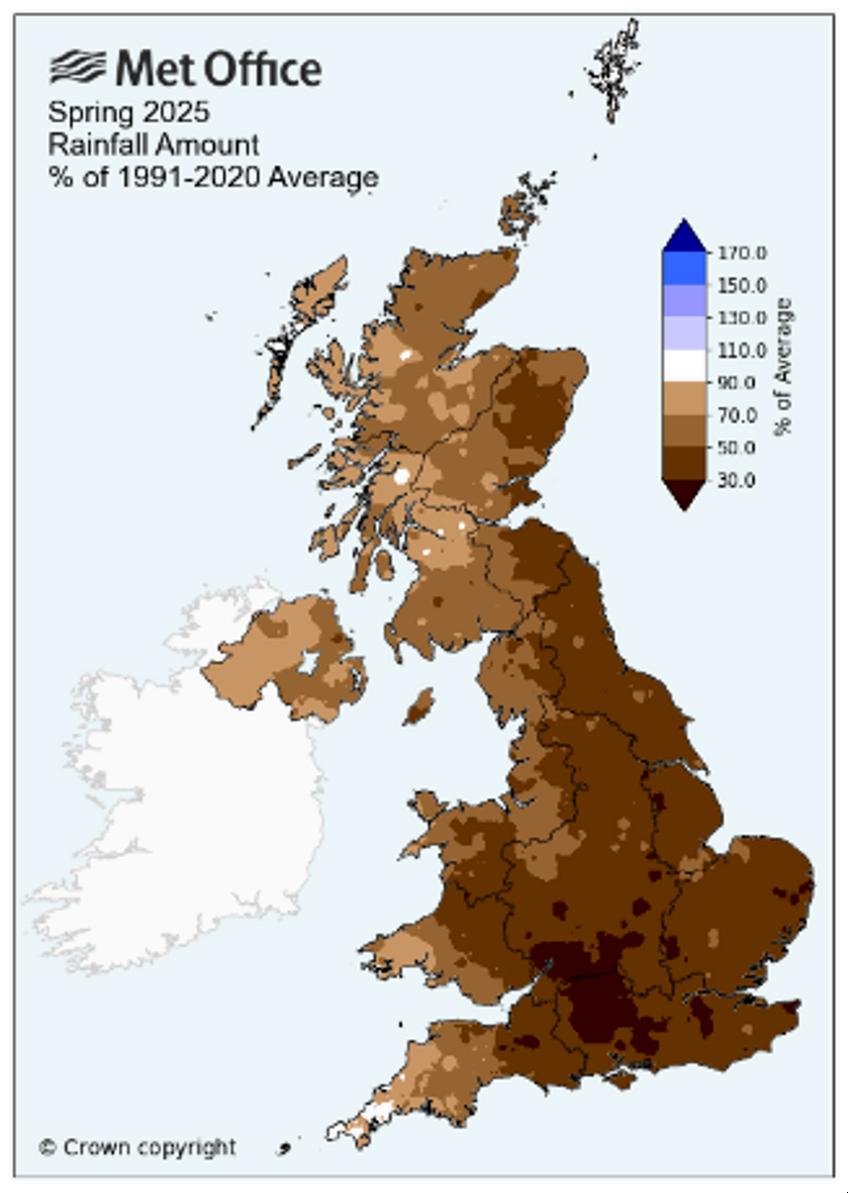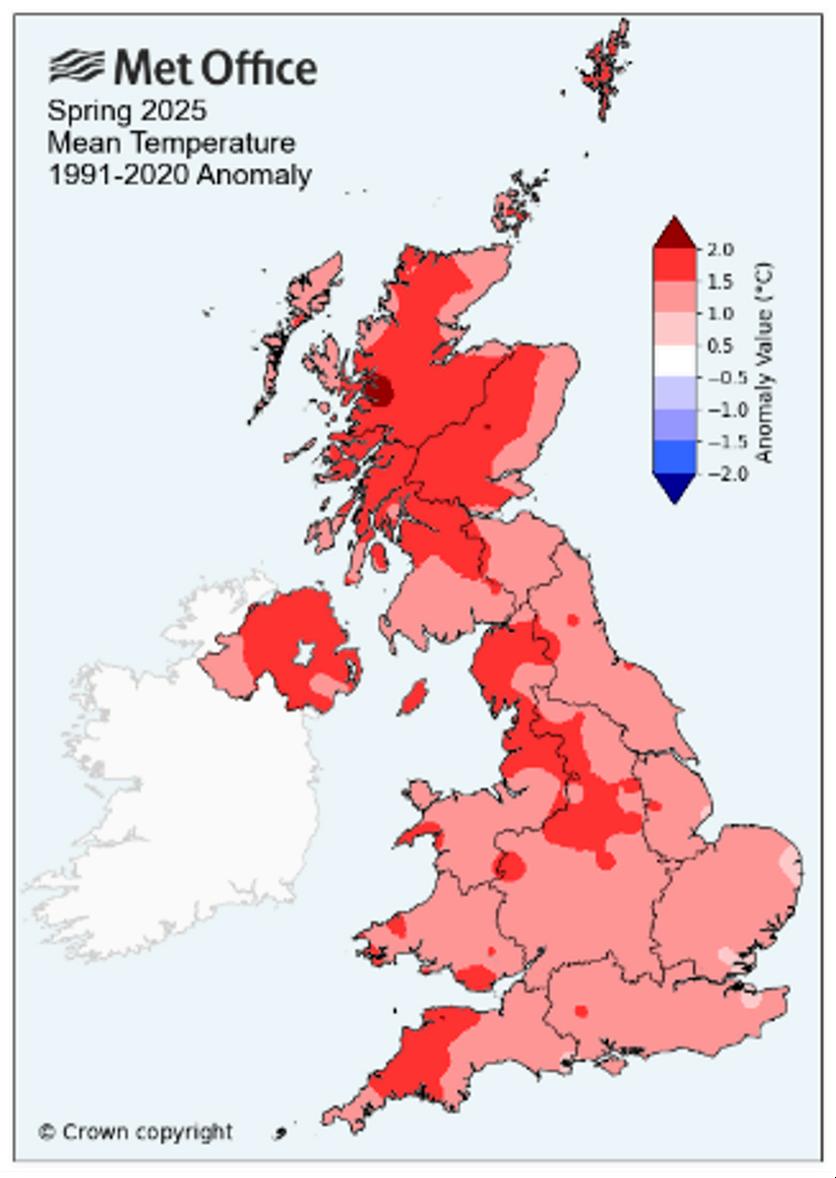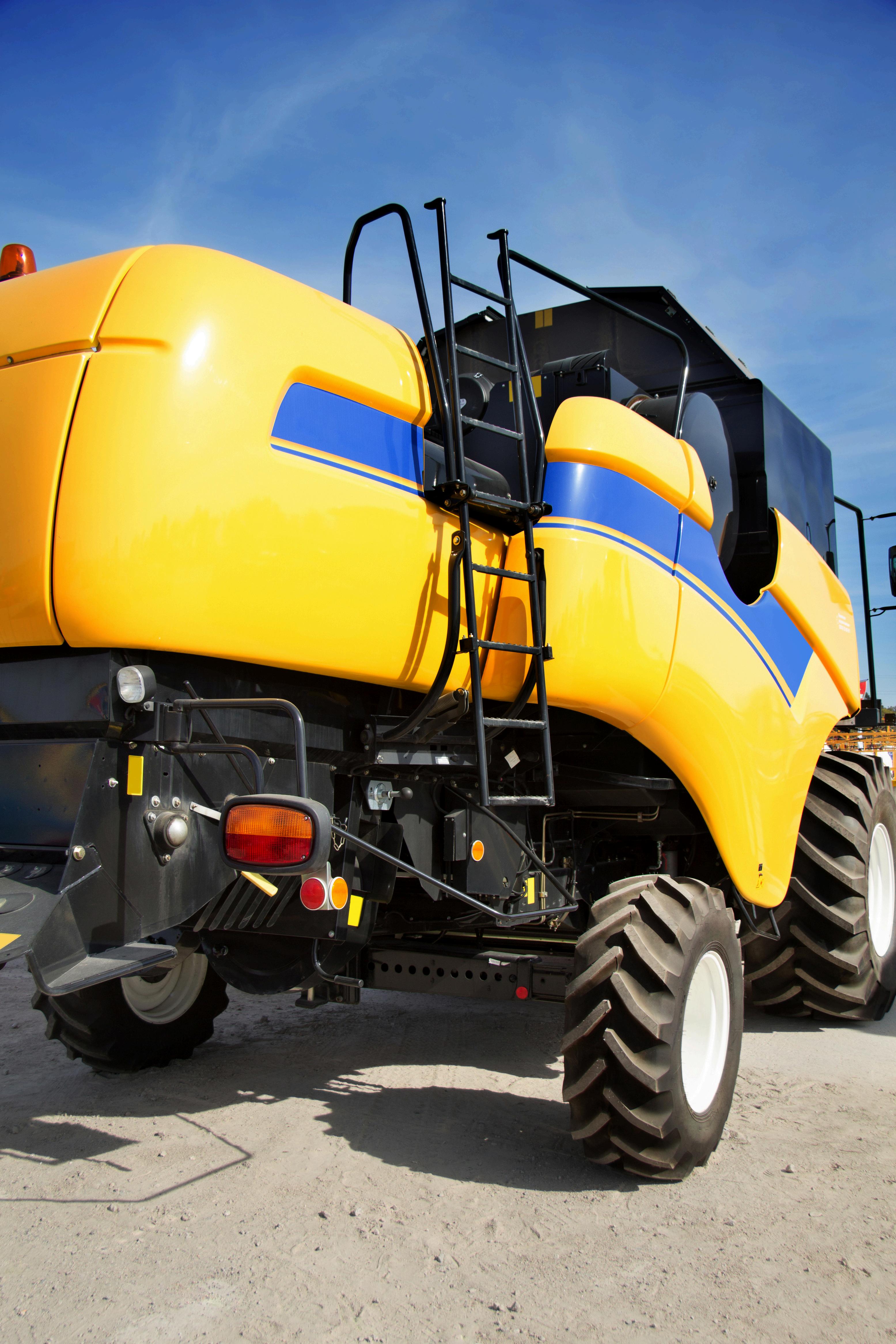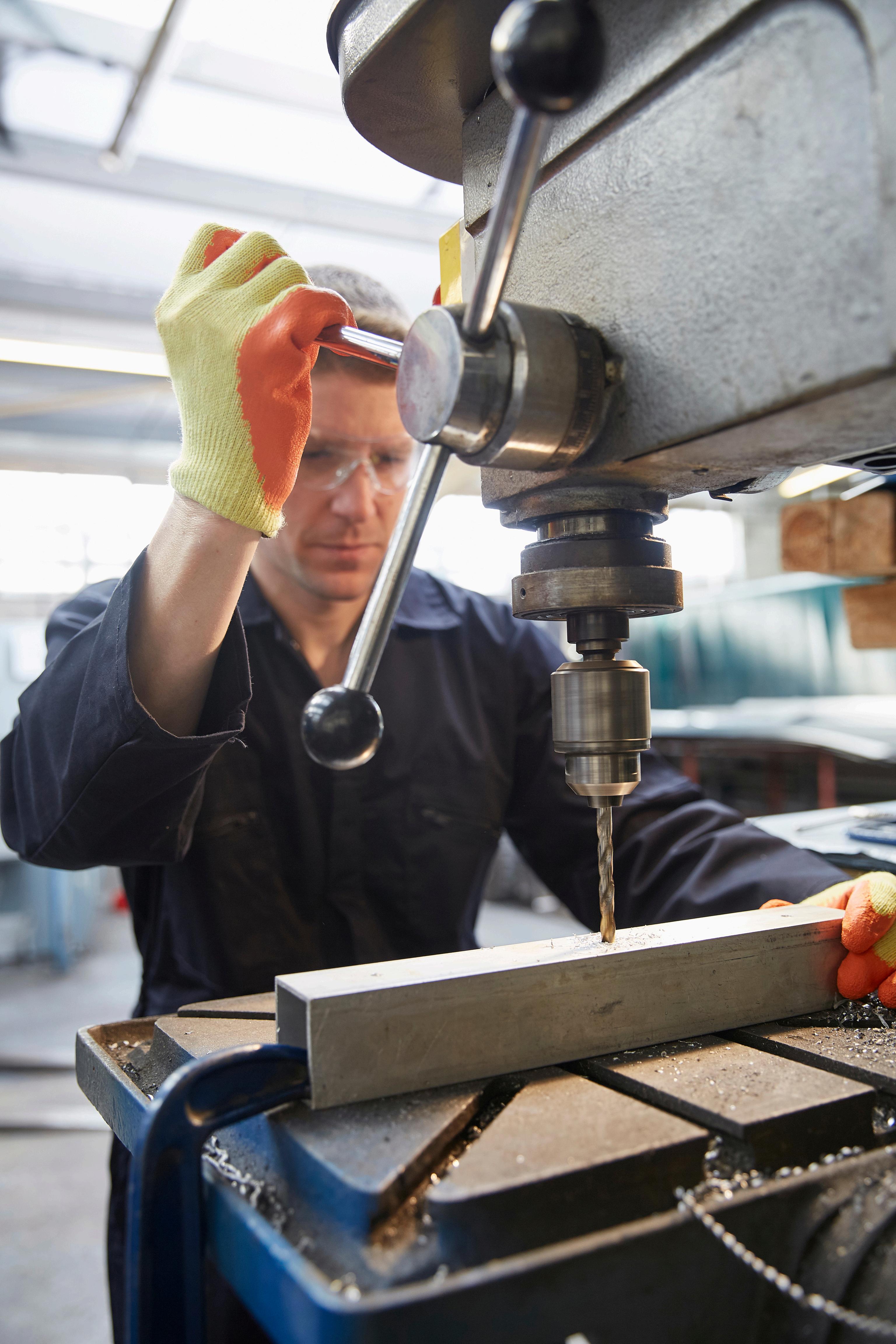HEALTH&SAFETY BULLETIN








Welcome to Ceres Rural’s Health & Safety Bulletin. Each quarter, we update you on industry news, topical issues, and safety alerts with the aim of supporting you in achieving best practice on your farm or estate. This edition outlines key safety considerations for the use of air compressors on farms and estates. It highlights the increased risk of field and machinery fires this harvest following recent extreme weather and suggests a number of preventative and reactive measures. The bulletin also provides a reminder to farms and estates to apply for an abnormal load dispensation for machinery movements in the coming months, before commenting on some of the health and safety failures frequently seen to be affecting the use of pillar drills in workshops. This edition features an article by Steve Panton of Stephens Scown LLP, setting out a solicitor’s view of health and safety in British Agriculture. Lastly, we summarise four examples of recent health and safety accidents and prosecutions from non-agricultural settings, but with clear learning outcomes for the industry.
Air compressors are essential tools on farms and estates, widely used for tyre inflation, cleaning buildings and machinery, and powering pneumatic tools. However, they also pose serious risks if not used and maintained properly. By complying with legal requirements, carrying out routine maintenance, providing thorough training, and following established safety practices, operators can minimise hazards and maintain a safe working environment.

Inadequate maintenance and inspection: lack of regular servicing and inspection increases the risk of mechanical failure, unsafe operation, and non-compliance with legal requirements, such as those set out in the Pressure Systems Safety Regulations (PSSR) 2000. Implement a documented maintenance schedule for air compressors.
Overpressurisation: blockages, control system failures, or overspeeding can lead to dangerous pressure accumulations and explosions resulting in severe injuries from flying debris and shrapnel. Use pressure relief valves and regularly monitor air compressor performance.
Air injection: compressed air directed at the body can penetrate the skin and cause serious internal injuries. Never use compressed air to clean skin or clothing.
Air hose failure or detachment: ruptured or disconnected hoses can whip violently and injure workers. Inspect hoses regularly and use secure, pressure-rated fittings.
Electrocution: electrically powered compressors can cause electric shocks, especially in damp environments. Use residual current devices (RCDs), keep equipment dry, and inspect cables for wear or damage.
Fire and explosion: compressors can ignite flammable vapours if overheated or poorly ventilated. Keep compressors away from fuels, solvents and heat sources, and ensure good airflow.
Trip and entanglement hazards: poorly managed cables and hoses can create trip hazards or become entangled in moving machinery. Route hoses carefully and store them properly when not in use.
Eye and skin injuries: high pressure air can propel particles and debris, leading to eye and skin injuries. Always wear appropriate eye and face protection.
Hearing damage: compressors often exceed safe noise levels and can contribute to hearing loss, especially with prolonged exposure. Conduct noise assessments and provide hearing protection if exposure exceeds 80dB (action is legally required above 85dB). 3

Air compressors offer versatility and power to agricultural businesses, but must be handled with care. By understanding the risks and applying proper controls, operators can ensure they use this vital equipment safely and legally.
For further information, see: https://www.hse.gov.uk/pubns/books/hsg39.htm.
Recent extreme weather – spring 2025 was the warmest and sunniest on record with only 56% of long-term average rainfall, temperatures 1.44°C warmer than average, and 143% of normal sunshine hours – has greatly increased the risk of field and machinery fires this harvest.



With dry crops and dust-prone machinery creating ideal fire conditions, it is essential that farms and estates take proactive steps to prevent and manage fire incidents effectively, by adopting preventative and reactive measures including:
Machinery maintenance: regularly service combine harvesters, balers, tractors and telehandlers. Clean daily to remove dust, straw and chaff, especially around engine bays and exhausts. Check wiring, fuel lines and hydraulic hoses for wear, leaks or damage that could lead to sparks or overheating. Consider using automatic emergency detachment systems such as the Siwi FireSafe on high risk trailed implements such as balers.

Harvest timing: avoid harvesting during the hottest part of the day when the Fire Severity Index is high. Monitor local weather forecasts including wind speed and direction, as fires can spread and change direction quickly in windy conditions.
Straw management: remove bales from fields promptly. Stack bales away from buildings, roads and machinery, and avoid stacking until bales have cooled down to reduce the risk of spontaneous combustion.
Firefighting equipment: ensure all machinery and vehicles carry carbon dioxide or dry powder fire extinguishers and fire sticks. Keep water bowsers or sprayers filled and on standby during harvest operations. Make sure staff are familiar with the locations of firefighting equipment and that it is regularly checked and serviced. Consider fitting fire suppression systems to susceptible machinery including combine harvesters and balers.
Water sources: plot the locations of fire hydrants, ponds, lakes and reservoirs on farm and estate plans. Where possible, input them into systems including Omnia and JD Link. Bear in mind that in an emergency, water sources may be located on neighbouring farms and estates as well as on the home holding.
Emergency planning: develop and communicate a clear fire response plan including who will call the emergency services, who will unlock gates or move machinery that is blocking gateways, who will bring water bowsers to site, and who will direct the fire and rescue services to the incident location.
Fire reporting: download and use the What3Words app to provide accurate location information when reporting fires to the emergency services. Inform neighbouring farms, estates or residential properties if the fire threatens shared boundaries.
Safety first: do not put staff at risk. Most farm and estate workers are likely to lack the personal and respiratory protective equipment and firefighting instruction, training and expertise to safely deal with the incident. Prioritise evacuation and allow emergency services to take control.
As harvest arrives, the risk of fire is significantly heightened. By adopting the measures above, farms and estates can reduce the likelihood of fire and respond more effectively if one occurs. Preparation today can prevent disaster tomorrow –stay vigilant, stay safe!


Farms and estates are reminded to apply for an abnormal load dispensation for machinery movements in the coming months. This must be done before the movement occurs and a copy of the document should be kept in the machinery at all times.
Legislation affecting abnormal loads includes the Road Vehicles (Construction & Use) Regulations 1986, Road Vehicles (Authorised Weight) Regulations 1998 and Road Vehicles (Authorisation of Special Types) (General) Order 2003. Agricultural machinery normally falls under the former Regulations and is most commonly affected due to its width. Dispensations are required for machinery that is:
A weight of more than 44,000kg.
A load of more than 10,000kg for a single non-driving axle.
A load of more than 11,500kg for a single driving axle.
A width of more than 2.9m.
A rigid length of more than 18.65m. For further information, see: https://nationalhighways.co.uk/road-safety/abnormalloads-and-the-esdal-system.

Pillar drills are common fixtures in farm and estate workshops for accurate drilling of materials such as timber, metals and plastics. Frequently however, health and safety failures arise including:
Drill not secured to the floor, rendering it unstable, prone to toppling.
Chuck guard missing or removed, causing the risk of user entanglement.
A load of more than 11,500kg for a single driving axle
Pillar drill not checked for electrical safety, with the risk of electrocution.
Workpiece held by user (not clamped in place), risking hand injuries.
Incorrect speed settings, causing overheating and bit breakage
Safety features bypassed (e.g. guards removed), contravening legislation.
Poor maintenance including worn belts, loose parts or damaged switches, risking pillar drill failure or electrocution.
Eye protection not used, with the associated risk of sight loss.
User wearing loose clothing or jewellery, with the risk of entanglement.
Lack of instruction, training and supervision, increasing the risk of accidents.
Pillar drill located close to combustible materials which sparks could ignite leading to fire or explosion.
Farms and estates are reminded of their obligations under the Health & Safety at Work etc Act 1974 to ensure, so far as is reasonably practicable, the health, safety and welfare of employees; and under the Provision & Use of Work Equipment Regulations 1998 (PUWER) to ensure that working equipment is maintained in an efficient state, in efficient working order and in good repair. The Control of Vibration at Work Regulations 2005 also stipulate that in certain circumstances, frequent users of pillar drills should be considered for health surveillance for Hand-Arm Vibration Syndrome (HAVS), if their vibration exposure meets or exceeds regulated thresholds.
For further information on risk assessment of and safe systems of work for workshop equipment, contact: robert.gazely@ceresrural.co.uk or 07592 041617.

Steve Panton, who has over 20 years’ experience of Health & Safety Executive investigations and prosecutions in the agriculture sector, shares his thoughts on why things go wrong, the consequences of non-compliance and how to reduce the risk of an accident and enforcement action being taken.
The consequences of non-compliance have increased significantly over the last decade Greater fines are being imposed and the number of individuals being prosecuted and receiving custodial sentences have both risen during .

this period. Due to more robust supply chain governance and the rise in social media, reputational and wider financial harm are also now more pronounced
The cases of AB Agri Limited (£566,000 fine – employee severed his lower right arm while trying to clear a blockage in an unguarded section of an animal feed mixing machine) and Neil Speakman (12-month prison sentence imposed as a result of striking and fatally injuring his three-year-old daughter while driving a telehandler) serve as recent examples.
What has remained constant is that many work-related incidents resulting in prosecution have very similar primary causes. These include not properly planning work at height, workers operating vehicles and machinery without adequate training, failing to isolate machinery before clearing blockages or undertaking repairs, inadequate supervision and tolerating unsafe working. Age and experience are not major differentiating factors. Latest HSE statistics confirm that over a third of fatal work-related accidents in England, Wales and Scotland involve workers aged 60 and over
So how can you minimise the potential of an accident taking place and being the subject of an HSE investigation and prosecution? The answer depends on the activity being carried out, the equipment being used, the risks involved and the effectiveness of the controls you have in place
Some legal duties are general in nature, such as those owed under sections 2 and 3 of the Health and Safety at Work etc Act 1974, requiring you to take reasonably practicable steps not to expose employees and others to risks to their health and safety. Other duties are strict in nature, such as preventing access to moving machinery parts. In such cases, workers need to be given adequate training and instruction on the hazards involved and that, in the absence of suitable guarding, machinery should be isolated before intrusive inspections or repairs are undertaken
Having a good safety culture and effective supervision, particularly with new or inexperienced workers, are fundamentally important and often overlooked. Along with following HSE published guidance, being able to demonstrate that you undertake proportionate checks to make sure that workers know how to carry out tasks safely and address unsafe working practices, could be the difference between HSE deciding whether or not to prosecute. These factors may also be the key to you persuading a jury to return a not guilty verdict.
A good example to show the very different outcomes, depending on your approach, is managing the risk of cows in a field with a public right of way. There have been a number of successful HSE prosecutions over the years involving farmers who have failed to keep cattle in fields that do not have public access or failed to offer and/or display signs of an alternative route when it was reasonably practicable to do so. However, the recent case of Richard Dormor illustrates the contrasting fortunes of those who follow guidance and put adequate measures in place. Mr Dormor was prosecuted after two members of the public were injured whilst walking their dogs through a field where 40 cows were grazing with some calves.
In January 2025, Mr Dormor was acquitted by a jury They accepted that he followed HSE guidance, had properly considered the structure of his farm (36% of fields had a public right of way), had systems in place for the selection of cows based on their temperament and supervision of his herd and had also put up clear warning signs. Mr Dormor had shown that he did everything that was reasonable in the circumstances and had discharged the duty owed to those involved

Steve is a partner and head of the regulatory enforcement and compliance practice at Stephens Scown LLP.


Twice yearly, we bring you examples of recent health and safety accidents and prosecutions, both from agricultural and non-agricultural settings.
A 48-year-old man from Cheshire died when a large tree limb fell and struck him. He had been walking his dog in a public park but received multiple injuries and died at the scene. Less than a year before, another large limb had fallen from the same tree – the incident was never investigated but the District Judge remarked that this should have “acted as a wake-up call.”
The HSE’s investigation found the Council (who controlled the park) did not have a formal overarching tree strategy to manage the risks from trees in public places and their grounds services contractor had no robust tree management policy. This is in contrast to organisations that are responsible for trees in areas regularly used by members of the public often adopting ‘zoning’, where trees are prioritised for proactive checks based on the frequency of public access.
The Council pleaded guilty to breaching Section 3(1) of the Health & Safety at Work etc. Act 1974 and was fined £500,000 plus costs of £7,284. The grounds services contractor did not receive a separate penalty but was ordered to pay a nominal fine of £500.
The HSE commented: “This was an utterly tragic event that has caused the death of a much-loved husband and father… No lessons were learned from the limb falling off the tree less than a year before… There was no overarching, consistent risk identification process leading to zoning of trees in all frequently accessed public areas.”
For HSE guidance on the management of the risk from falling trees or branches, see: https://www.hse.gov.uk/foi/internalops/sims/ag_food/010705.htm.
A 53-year-old man from Wrexham suffered life-changing injuries including having his left leg amputated below the knee, when a pack of waste MDF sheets weighing around 350kg fell from a trailer and landed on him. A colleague of the injured man had loaded a flatbed trailer with waste MDF sheets for him to transport across the site to be destroyed. When he began to take off the straps holding the sheets in place, a pack fell off the trailer and landed on top of him.
The HSE’s investigation found the road across the site was poorly maintained and had lots of potholes. There was also no suitable risk assessment or system of work in place for stacking, moving and loading the waste MDF sheets.
The company pleaded guilty to breaching Section 2(1) of the Health & Safety at Work etc. Act 1974 and was fined £400,000 plus costs of £4,701.
The HSE commented: “A man has suffered truly life-changing injuries as a result of this company’s failures. The incident was completely preventable had a proper risk assessment been carried out.”
Two employees of a company which produces electricity from food waste by anaerobic digestion, suffered life changing injuries when the metal tank they were working on exploded, launching high into the air before crashing back down. The employees were using a grinder to cut and replace pipework at the top of an 11m high metal tank containing waste slurry. They were not using harnesses. Sparks from the grinder ignited flammable gases causing the tank to explode.
The first employee was ejected from the mobile elevating work platform (MEWP) into the air and landed on the ground in the slurry around the tank. He suffered serious injuries to his back, head and torso and was in hospital for two months. His injuries were so severe that he was unable to work for more than two years. He now suffers from pre and post traumatic amnesia and has psychological scars from the incident.
The second employee was thrown into the air and landed back in the basket of the MEWP. Following the incident, his leg was amputated, and he remains wheelchair bound pending a prosthesis. He also sustained a fractured skull and a piece of metal in his elbow that continues to affect his daily life.
The HSE’s investigation found the company had failed to ensure the health and safety of its employees and others nearby. It had kept and treated waste in a manner likely to cause pollution to the environment and the explosion was caused by multiple failures in the company’s management system and exacerbated by multiple breaches of its environmental permit.
The company pleaded guilty to breaching Sections 2(1) and 3(1) of the Health & Safety at Work etc. Act 1974, Regulation 38(2) of the Environmental Permitting (England & Wales) Regulations 2016, and Section 33(1)(c) of the Environmental Protection Act 1990, and was fined £304,500 plus costs of £229,988.


The HSE commented: “It is remarkable that [the employees] weren’t killed. This incident resulted from fundamental and multiple failings by the company to properly manage its health and safety risks. These included failing to ensure that the design, installation and use of the tanks were safe; failing to carry out risk assessments; failing to put in place a safe system of work; and failing to train and supervise employees.”
For video footage of the explosion and incident, see: https://press.hse.gov.uk/2024/11/22/company-fined-after-an-explosion-seriouslyinjured-two-employees. Please be mindful the video contains images that some viewers may find distressing.
By Telehandler
A 44-year-old employee of a construction company was killed by a telehandler in Glasgow. The employee had been reversing the vehicle when it slid down an embankment and overturned – despite the efforts of colleagues and the emergency services, he died from crush injuries at the scene.
The HSE’s investigation found the company had not risk assessed the traffic route where the incident occurred and that as a result of the traffic route not being suitable for the telehandler, it overturned, causing the fatality.
The company pleaded guilty to breaching Regulation 27(2) of the Construction (Design & Management) Regulations 2015 and was fined £160,000.
If you would like to discuss any topics raised in this issue of the Health & Safety Bulletin, do not hesitate to contact our Health & Safety Guidance expert.

ROBERTGAZELY PARTNER|SAFFRONWALDEN
robert.gazely@ceresrural.co.uk 07592 041 617
